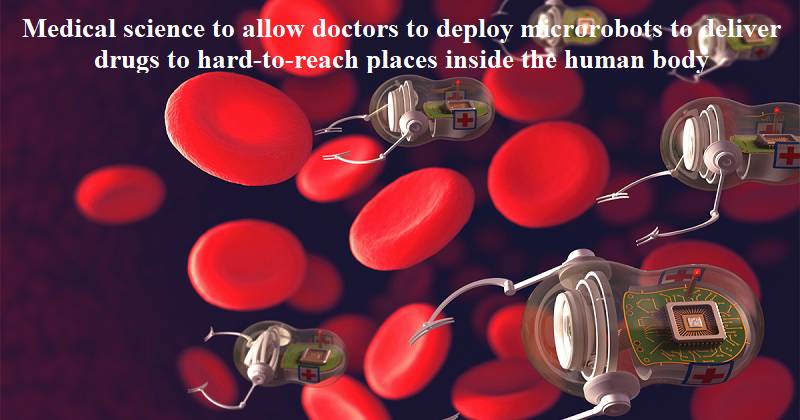
Can prescription drugs be delivered to hard-to-reach areas inside the human body? Scientists at the University of Colorado Boulder are developing microrobots that could soon make this possible. These tiny, self-propelled robots are designed to navigate through liquid and could revolutionize medical treatments. The research on these microrobots was published in the journal “Small” in April.
Lead author Jin Lee, a postdoctoral researcher in the Department of Chemical and Biological Engineering, explained that these microrobots have the potential to perform non-invasive surgeries. Instead of invasive procedures, the robots can be introduced into the body through pills or injections, allowing them to carry out procedures on their own.
Measuring just 20 micrometers in diameter, these microrobots have shown remarkable speed and capabilities. Despite their small size, they can travel at speeds of approximately three millimeters per second, which is equivalent to 9,000 times their own length per minute. In terms of relative speed, they even outpace the cheetah.
The study involved using fleets of these microrobots to deliver doses of dexamethasone, a commonly used steroid medication, to the bladders of laboratory mice. The successful results indicate that these microrobots hold promise as a valuable tool for treating bladder diseases and other illnesses in humans.
To create these microrobots, the research team utilizes biocompatible polymers and a technology similar to 3D printing. Resembling small rockets with three fins, these robots feature an enclosed bubble of trapped air, much like an inverted glass submerged in water. When exposed to an acoustic field, such as ultrasound, the trapped bubbles vibrate vigorously, propelling the robots forward by expelling water.
One specific condition that could benefit from microrobots is interstitial cystitis, also known as painful bladder syndrome, which affects millions of individuals in the United States and causes severe pelvic pain. Current treatment options involve multiple clinic visits over several weeks for patients to receive dexamethasone solutions directly into the bladder using a catheter, resulting in discomfort. However, the introduction of microrobots could offer a less invasive and more effective solution for patients.

Post Your Comments